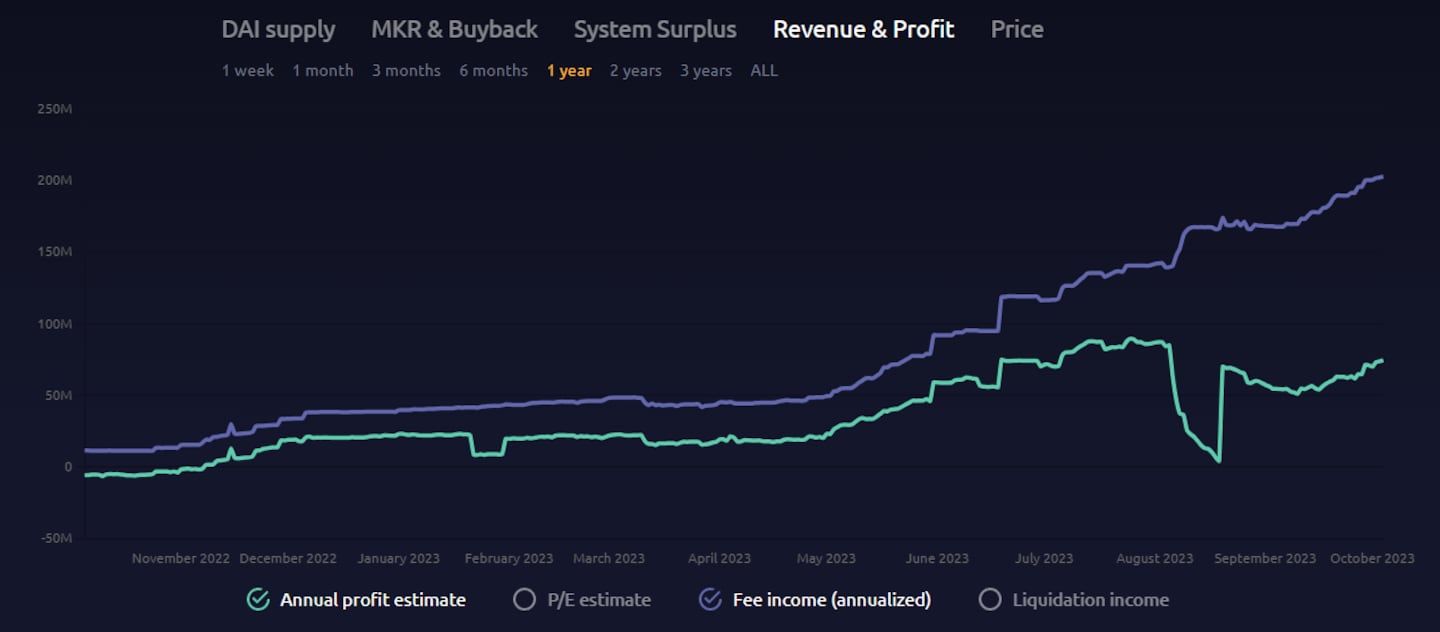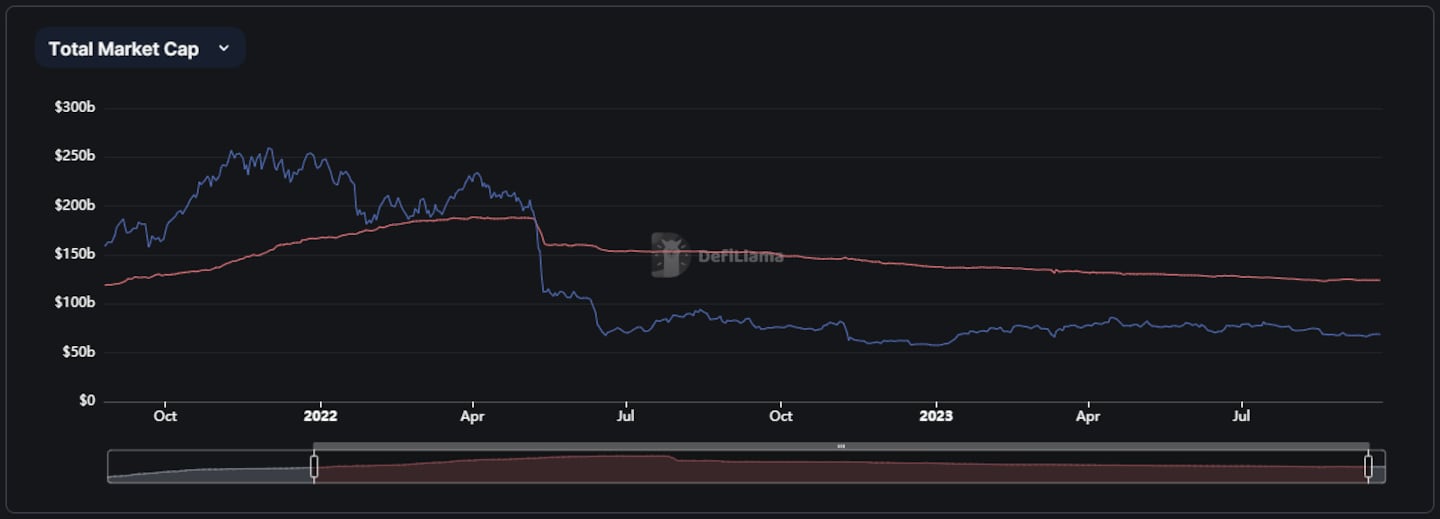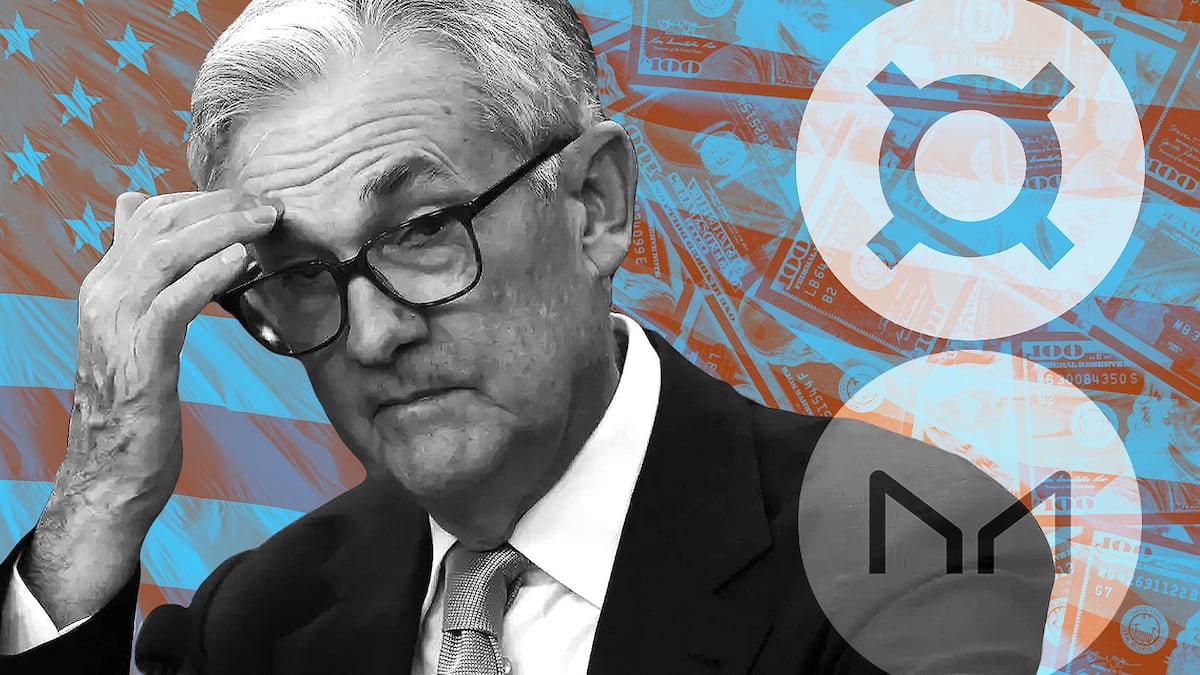- DeFi protocols MakerDAO and Frax profit from high bond yields.
- Such protocols stand to make even more if interest rates keep rising.
- Elsewhere, the high-rate environment continues to have a negative impact on the wider DeFi ecosystem.
Agile players in decentralised finance are seizing on lucrative trades in the bond market as yields on 30-year Treasuries hit their highest level since 2007
While the move is a signal of weakness in global economies, yields of over 5.5% on short-dated bonds have lured DeFi juggernauts including MakerDAO, the fourth-largest protocol with $4.5 billion of investor deposits.
Over the past year, MakerDAO has committed to a bold strategy: holding US Treasury bonds, in addition to generating yield by lending out its Dai stablecoin.
The result: MakerDAO can offer its users some of the highest yields in DeFi through its dollar-pegged Dai stablecoin while still generating a healthy profit for the protocol.
“The protocol is effectively running a carry trade,” TJ Ragsdale, co-founder of Entheos Network and previous real world assets manager at MakerDAO, told DL News. “It mints Dai at the prevailing cost of capital, and lends it to the US government for a higher rate, pocketing the spread.”
MakerDAO’s strategy appears to be working. According to MakerDAO analytics platform Makerburn.com, the protocol stood to generate an annual profit of about $23 million at the start of the year. That figure has now more than tripled since to $73 million.

And according to Ragsdale, if rates keep rising, the profitability of Maker’s carry trade on newly purchased US treasuries increases.
At the same time, much of MakerDAO’s revenue gets routed back to Dai holders through the eDSR, or enhanced Dai savings rate, a mechanism where Dai holders can lock up their tokens to earn yield. The eDSR currently yields a 5% annual return.
“If yields improve, eDSR will improve too,” Raphael Spannocchi, a DAO governance researcher at Flipside, told DL News. “Most of the treasuries are short-term, so Maker can follow pretty quickly.”
Other DeFi protocols are taking note.
Frax Finance, another DeFi protocol that issues its own stablecoin, just passed a governance vote to implement a similar system to the Dai savings rate, but for its own stablecoin, Frax. Like MakerDAO, the Frax yield primarily comes from the protocol’s bond holdings through outside entities.
The high-interest rate environment is a key catalyst driving innovation in interest-bearing stablecoins such as Dai and Frax, said Tom Wan, a research analyst at 21.co.
“They have to be more competitive to retain users from fleeing to earn a risk-free rate from US Treasuries,” he told DL News.
Wan noted that since the US Federal Reserve started hiking interest rates in 2022, the market cap of crypto stablecoins has dropped 33%.

And it’s not just stablecoins that are suffering.
Outside of havens like MakerDAO and Frax, the high-rate environment is having a negative effect on the wider DeFi ecosystem.
Investor deposits across DeFi are down 77% from their 2021 highs, according to DefiLlama data. Trading volumes at decentralised exchanges have also cratered.
“Interest rate hikes generally hurt risk assets, including other DeFi protocols,” Ragsdale said, adding that further rate hikes will be more damaging to non-Maker protocols that can’t take advantage of them.
Others, such as Tadeo, developer relations manager for MakerDAO’s Spark Protocol, share a similar view.
“If UST yields go higher, protocols that do not embrace them will keep losing competitiveness,” he said.
Tadeo explained that the most successful protocols are those that integrate sDAI — the yield bearing version of Dai — into their offerings.
But while such protocols are enjoying their moment in the sun, the strategy of relying on high interest rates could be a double-edged sword.
Because if and when bond yields drop, the yield offered on stablecoins like Dai and Frax is likely to drop, too.
Have a tip on DeFi? Contact the author at tim@dlnews.com.
